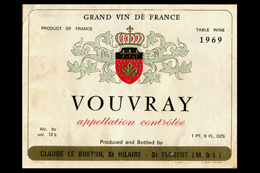
AOC, AOP, DOC, DOP, PDO, PGI… UGH! Help!
Feeling confused (overwhelmed, actually) by the tide of French and Italian appellation designations?
Well, join the club!
Historically, the wines of France have been classified under the AOC or Appellation d'origine contrôlée system: Appellation of Controlled Origin, a classification created by the French government in the 1950s.
To obtain AOC status, wines must be made from authorized grape varieties grown in designated areas. And they must be vinified, packaged, and marketed in accordance with the appellation's standards.
In the 1960s, Italy created a similar system, modeled after the French: DOC or Denominazione d'origine controllata, Designation of Controlled Origin.

Image via Wine Folly, one of our favorite wine blogs. Click here for the full-sized image.
In the 1990s, the European Union created a new, overarching system under the aegis of the Common Market Organization (CMO), designed to offer producers and consumers a uniform labeling protocol: Protected Designation of Origin (PDO) and Protected Geographical Indication (PGI).
Here's a link to the EU page where these designations are explained.
The new system, which came into effect a few years ago, does not replace the AOC and DOC systems. They are still in place. But the wines are now also classified in the overarching EU system as well.
This means that AOC is also an AOP or Appellation d'origine protégée (PDO in English) and a DOC is also a DOP or Denominazione d'origine protetta (PDO in English).
Next week we'll address the PGI and how it relates to French and Italian wines.